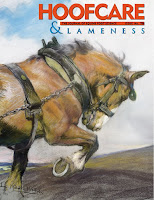The United Stated Department of Agriculture's (USDA) Office of Inspector General (OIG) recently performed an audit of the Animal and Plant Health Inspection Service's (APHIS) oversight of the humane treatment of Tennessee Walking horses at shows as mandated by the Horse Protection Act. The audit also addressed the long-distance transport of horses destined for slaughter outside the United States.

To quote the audit document: "Concerning the treatment of show horses, we found that APHIS’ program for inspecting horses for soring is not adequate to ensure that these animals are not being abused. At present, horse industry organizations hire their own inspectors (known as designated qualified persons (DQP)) to inspect horses at the shows they sponsor. However, we found that DQPs do not always inspect horses to effectively enforce the law and regulations, and in some cases where they do find violations, they deliberately issue tickets to friends or family members of responsible individuals so that the responsible person could avoid receiving a penalty for violating the Horse Protection Act."
The report said that APHIS employees attend very few horses and that, when they do, APHIS employees routinely bring armed security or the police with them in the interest of their personal safety.
In the executive summary of the audit, OIG recommended that APHIS "seek the necessary funding from Congress for the Horse Protection Program, as the current level of funding does not enable the agency to oversee it adequately. Given the weaknesses in the inspection process, APHIS employees need to attend more shows to ensure that horses are inspected adequately."

OIG's review of the slaughter horse transport program found that, in their view, APHIS needs to improve its controls for ensuring that horses being shipped to foreign plants for slaughter are treated humanely. At present, the summary said, "APHIS does not deny authorization to individuals with a record of inhumanely transporting slaughter horses to ship other loads of horses, even if unpaid fines are pending for previous violations. Regulations simply do not address denying this authority, and so APHIS provides the authorization, regardless of the owner’s history. Without regulations or legislation to establish more meaningful penalties, owners have little incentive to comply with regulations, pay their penalties, and cease inhumanely handling horses bound for slaughter."

Finally, OIG found that there were "control deficiencies in how APHIS tags horses that have been inspected and approved for shipment to foreign slaughterhouses. The agency requires shippers to mark such horses with backtags, which are intended to allow APHIS employees to trace horses back to their owner and also to verify that the horses have passed inspection by an accredited veterinarian. We found, however, that the agency’s controls over these tags were weak, and that owners could easily obtain them and apply the tags to horses without APHIS’ knowledge."
In addition, APHIS "does not currently have an effective control or tracking system to trace all backtags used to transport horses to slaughter. Without regulations controlling the distribution, use, and tracking of these tags, owners can transport horses that do not meet the requirements for shipment. APHIS needs to seek the appropriate legislative and regulatory changes to ensure that only qualified individuals (such as APHIS personnel or USDA-accredited veterinarians) apply backtags to horses being shipped to slaughter. It also needs to obtain the resources necessary to adequately oversee the Slaughter Horse Transport Program."
Recommendation Summary
1. Abolish the current DQP system and establish by regulation an inspection process based on independent accredited veterinarians, and obtain the authority, if needed, to charge show managers the cost of providing independent, accredited veterinarians to perform inspections at sanctioned horse shows, sales, and other horse-related events.
2. Implement a control to ensure that individuals suspended from horse shows, sales, or exhibitions due to Horse Protection Act violations do not participate in subsequent events.
3. Seek the necessary funding to adequately oversee the Horse Protection
4. Revise and enforce regulations to prohibit horses disqualified as sore from competing in all classes at a horse show, exhibition, or other horse-related event.
5. Revise Slaughter Horse Transport Program regulations to allow APHIS to deny shipping documents to individuals who repeatedly violate humane handling regulations and who have fines outstanding.
6. Develop and maintain a control (database or list) of all individuals who have violated the regulations of the Slaughter Horse Transport Program and have not paid the associated fines.
7. Revise regulations or implement adequate controls to ensure that APHIS provides backtags to qualified personnel who can inspect horses bound for slaughter and apply, or oversee the application of, backtags when approving transport documentation.
8. Develop and implement an appropriate control to track individual horses by backtag number on all shipping documents approved so that reconciliation can be performed, violations can be investigated, and enforcement action can be initiated against the horse’s owner and shipper.
© Fran Jurga and Hoofcare Publishing Fran Jurga's Hoof Blog is a between-issues news service for subscribers to Hoofcare and Lameness Journal. Please, no use without permission. You only need to ask. This blog may be read online at the blog page, checked via RSS feed, or received via a digest-type email (requires signup in box at top right of blog page). To subscribe to Hoofcare and Lameness (the journal), please visit the main site, www.hoofcare.com, where many educational products and media related to equine lameness and hoof science can be found. Questions or problems with this blog? Send email to blog@hoofcare.com.













